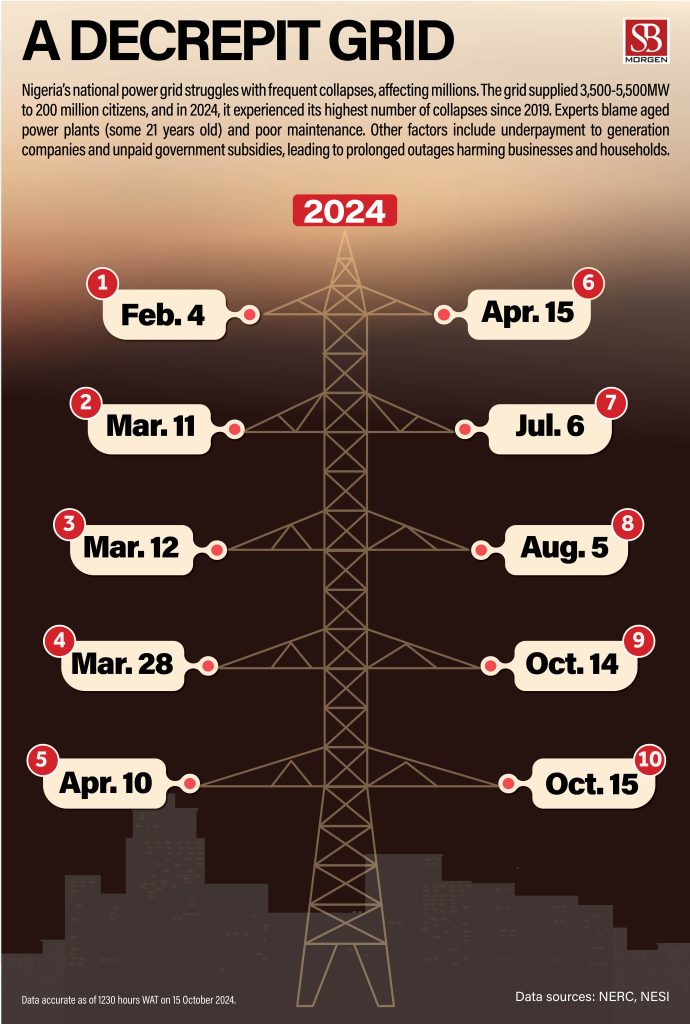The national power grid consists of an extensive network of electrical transmission lines that links power stations to consumers nationwide. Energy companies in Nigeria generate and supply between 3.5GW and 5.5GW of electricity to more than 200 million people.
According to SBM Intelligence, the total number of grid collapses in 2024 alone equalled that in the entire year 2019, which was ten times. According to the Nigerian Electricity Regulatory Commission (NERC), the frequency of collapses in 2020, 2021, 2022, and 2023 was 4, 2, 4, and 3, respectively.

The grid experienced failures 12 times in 2018, 15 times in 2017, 22 times in 2016, 6 times in 2015, 9 times in 2014, and 22 times in 2013. This pattern of frequent grid failures has left millions of Nigerians struggling with extended power outages, further complicating the issues faced by businesses and households.
Experts attribute the persistent national grid collapses to the country’s aging power plants. The Nigerian Electricity Regulatory Commission (NERC) has indicated that many of these plants are up to 21 years old, noting that age and maintenance challenges for generating units are major factors contributing to mechanical outages in Nigeria.
Additional factors affecting the industry include a lack of liquidity in the upstream segment of the National Electricity Supply Industry (NESI), resulting from the significant underpayment of generation companies’ invoices by distribution companies (market shortfall) and the government’s failure to pay subsidy costs.


